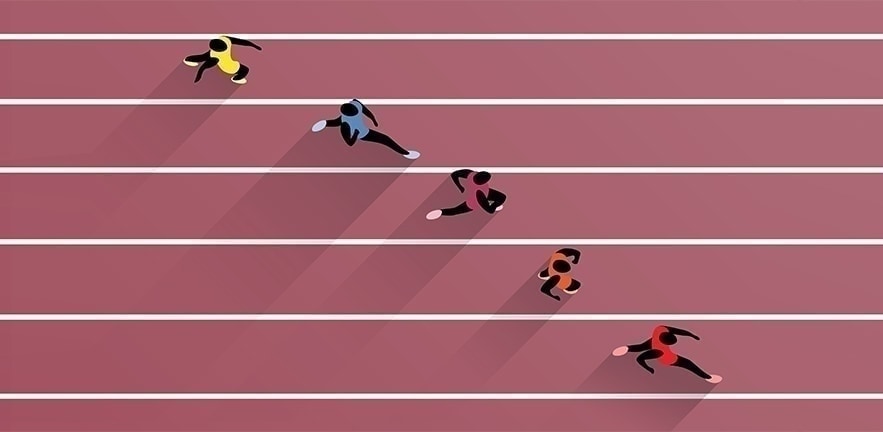Mobile phone upstarts in China used ‘edging strategy’ to outpace foreign giants like Apple and Samsung, and this holds lessons for managers around the world.

I had the recent opportunity to write an article about the Chinese telecoms market with a Chinese consultant and thought leader, Yu Zhou. The article was published in the Chinese FT and the Tencent corporate magazine.
I learned a lot from this, as it is a very interesting example of how one can look at the same thing from slightly different angles – and as a result, better characterise it.
Through my Western analytical lens, I looked at this as an example of strategy and options for uncertainty, or the evolutionary hedging dilemma: all companies need focus, because if they attempt too many things they won’t do them well.
But while mastering their core markets, successful companies often must also shift to peripheral areas. That’s because focusing too much on the core can prevent firms from adapting to the world changing around it – just as in biological evolution, where animals that are too specialised go extinct when the environment alters.
The Chinese thinker sees this as the Yin of the centre (where you are focusing now) versus the Yang of the periphery (where you focus less). The Yin and Yang view implies that you need to balance both. There is less of a “scientific” explanation of the need for balance, but the balance becomes a picture that you can draw and with which you can explain the issue very simply.
The Chinese consumer market for mobile phones offers some fascinating examples. Following Apple’s iPhone breakthrough in 2007, the Chinese market featured many big players (from China and abroad) that were ready and capable of taking advantage of opportunities posed by flexible devices that combined talking, videoconferencing, gaming, photography and many other functions into a small package.
Yet as 4G was replacing 3G a few years later, the Chinese mobile phone market saw a reconfiguration: Nokia, TCL, Bird, HTC, Samsung and even Apple, which used to stand at the core of the mobile market in China, were overtaken by companies and brands formerly on the edge.
These companies include Huawei, which combined a high-end device with independent chip R&D to shed its former image as just a B2B company; Honor, a Huawei brand focusing on young people; and OPPO and vivo, which used their intimate knowledge of the Chinese market to build solid distribution channels outside of urban areas, including small towns and villages. In comparison, Apple and Samsung stayed safely in the centre.
The result: By the third quarter of 2019, the China smartphone share of Huawei (including its Honor brand) was 40%, followed by vivo (19%), OPPO (18%) and Xiaomi (8%), compared to 8% for Apple and 6% for “others”, according to research firm Counterpoint. (In the first quarter of 2014, Samsung had a 20% market share, Apple had 9%, and Huawei lagged well behind at 8%, according to Statistica.)
So what are some of the lessons in this market transformation in a very short period of time? There are a couple of major ones that come to mind:
- Large companies often underestimate the risk of having their business taken from them, and are wary of failure. But an essential part of strategic management in a multi-divisional firm is to assess how many bets and failures can be carried in order to be agile but not foolhardy. Arrogance and hubris of big companies may be part of the explanation, in addition to the caution of having a lot to lose if they give up the centre too early.
- Judgment is hard to change. Nokia won design awards for its beautiful and functional user interfaces in the early years of the 2000s, but after the iPhone was introduced Nokia managers decided that they were about “connecting people” (the firm’s marketing slogan) and not about games and other diversions that have proved hugely popular. Nokia managers misjudged the potential of the new generalist device because they loved the frugality of their communication designs too much.
The Chinese mobile phone market shows that the flexibility of being able of quickly moving to the edge can neutralise technological advantages of big established players. I spent four days in Lagos, Nigeria, in January 2020, and saw ads by OPPO praising their new camera with motion compensation – so someone can take a dynamic picture of their boyfriend or girlfriend on the cycle next to them, in a way that (s)he looks perfectly still and in focus.
Keep moving, and with some skill you can move today’s edge into tomorrow’s centre.


Stephen Wang
Shaping the future is easier than predicting the future.
Easy when you know how. Know-how takes time but worth it.
Luke
Very interesting! Thanks for sharing. It can be tough to balance the specialist-generalist paradox.
Huantao Shou
Thanks for sharing, Prof. Loch. I have learnt a lot from this blog. Yes, things are changing all the time, we need to keep an eye on the new trend and sense the potential opportunities, however it is indeed not easy, which makes us more essencial to studing.